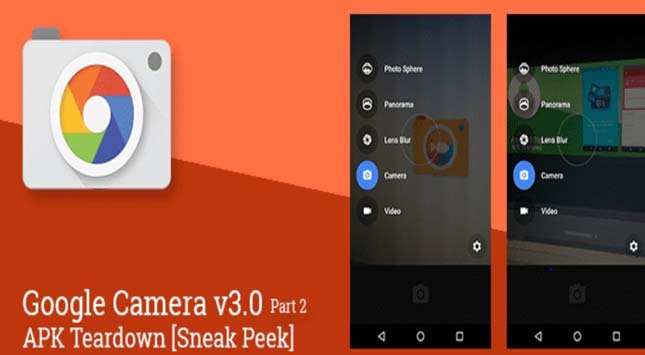Having a strong online presence on Google’s SERP is essential if you want more people to download and use your app.
However, achieving this can be easier said than done, and after all, optimizing your app’s product listing for SEO is not as obvious as traditional SEO, even if you are already familiar with the concept of SEO.
With that being said, how can we get mobile apps ranked in the SERP? Below, we will discuss some actionable tips for getting your mobile apps ranked quickly and effectively.
1. Optimizing Your App for the Target Keywords
If you want your mobile app to rank in the SERP, it’s fairly obvious that you should optimize it for your target keyword. The question is, how? Unlike a blog post, for example, we don’t have too many chances to include our target keywords in the app’s description. So, we have to ensure it is as effective as possible.
First, make sure to do proper keyword research and find the right keywords that would describe your app and at the same time match your user’s needs.
On the Apple App Store, you have 4,000 characters limit for your description, while in Google Play there are two descriptions: short (80 characters) and long (4,000 characters). So, make the most of them.
In general, your target keywords should be:
- Relevant for your target audience. We can assess this by measuring the monthly search volume of the target keyword.
- Relevant for your app. Not all keywords that are popular with your target audience are relevant.
- Depending on your budget and timeline, the target keyword must be competitive. It’s no use aiming for an overly saturated keyword if you don’t have the means to compete for it.
You can use various tools from the free Google Keyword Planner to premium tools like Ahrefs and SEMRush to help with our keyword research. Finding your target keyword properly can also help when you develop content to promote your app or optimizing your app in general.
2. Performing App Indexing to Boost Ranking
Google does offer a feature called Firebase App Indexing (Firebase is Google’s official app development platform) that helps us make sure that Google has properly indexed the app so it will be visible in the SERP.
Another advantage of implementing App Indexing is that it will show the install button for your app next to the search results (on Android phones), although at the moment this feature is not yet available for iOS apps.
With this feature, Google can index your app’s content and also help your app users find the public content of the app directly in the search results. Also, if you use the same URLs in your app that you use on your website, Google can crawl the links on your website and serve them in the search results.
In short, App Indexing can significantly help in enhancing ranking performance for your app and also for links to your app.
3. Earn Quality Backlinks for Your Mobile App
As with traditional SEO, backlinks are a very important element of mobile app SEO. When you have a lot of high-quality links coming to your mobile app’s listing or download page, it can significantly improve your app’s position on the SERP.
However, earning backlinks can be easier said than done, and typically what we can do is:
- Link to the app’s listing on your website (the download page)
- Add a link to all your social media profiles
- Reach out to authority media sources, blogs, and influencers, send out a press release to them, and hopefully, they will review your app and link it on their authority sites.
- Participate in relevant events (or host your own) to get links from the participants or the event’s websites
- Guest posts on relevant websites and blogs are still effective when done right
Remember that the quality of the incoming backlinks is more important than quantity. So, focus on getting links from authority websites and influencers, even just getting 3 to 5 links a month can be sufficient to build and execute a successful SEO strategy.
At the same time, pay attention if you are getting too many low-quality links and irrelevant ones, as they can be counterproductive and hurt your SEO performance.
Treat your app store listing and download page as its own website/landing page, and work on getting as many quality links as you can.
4. Optimize Your CTR (Click-Through-Rate)
A high click-through rate (CTR) will send a strong signal to Google and other search engines (and the app store) that your app is indeed relevant and worth listing, and so it will boost your position on the SERP.
So, how can we improve our app’s CTR on the SERP when it comes out as a search result? For instance, we can improve the quality of images (and include more interesting images) on your listing, clear and engaging CTAs, and especially great snippets/content that communicates the best values offered by your app effectively.

Pay extra attention to your content: break up texts into short paragraphs and lists/bullet points, and use images effectively. A/B tests every element of your snippets and your content to improve your CTR effectively.
Also, don’t forget that high CTR would also translate into higher conversions.
5. Encourage Positive Reviews
As a general rule of thumb, you should offer a link to your mobile app in all possible channels from your website, email campaigns, landing pages, images/infographics, videos, and other mediums.
Another important thing here is to encourage your users to leave positive ratings and reviews, improving your app’s star ratings in the process. This will help your app by sending trust signals to Google, so Google might improve your app’s position on the SERP.
There are various methods you can try to encourage positive reviews. However, don’t hesitate to encourage and remind your users that they should leave a review if they enjoyed your app. If you make the process easy and seamless, most satisfied users will be glad to leave a review.
Timing, however, is important, and you would want to ask for reviews when users are most likely to be satisfied with the app. For example, ask for reviews when they’ve accomplished a positive action in your app (i.e. if it’s a game when they’ve finished a level)
The biggest challenge is usually at the beginning when you don’t have too many users yet.
Fortunately, once you start to get more reviews, the process will be much easier as your app gets more users.
Also, an important thing here is to continuously improve upon your app based on user’s complaints and feedback. This way, we will eliminate the risks of having negative reviews as future users won’t have the same issue. Also, people who have left negative responses may change their ratings after the fix.
Remember not to constantly bombard users with review requests (especially if you are using popups) as it can annoy users and they might end up leaving negative reviews instead.
6. Update Your App Regularly
Another very important factor to help your app’s SEO is content freshness. If your mobile app is updated regularly with new features, technologies, bug improvements, and new content, Google will recognize it and might boost your app’s SERP ranking.
So, how often should we update the app?
In general, you should update your app every 20 days and at least once every month. The median number of days between updates for the top 200 apps (Apple App Store) is 18 days.
Also, don’t forget to announce the updates/fixes on the app’s description page, as well as your website and social media profiles. This will tell Google that your app is active and that you are keeping it fresh.
7. Include The App Name and Brand Name In the Link Text
A very common mistake is to link the profile page of the application without adding the app name or brand name and so it becomes something generic like “Download app here”. It’s very important to leave your brand name or company name here.
Another similar and common mistake is to use images/graphics including the usual “Available on Google Play/App Store” button graphics.
Use your anchor text wisely and make sure to include your app name and your brand/company name in the link text that leads to the download pages. For example, you can say “Get the (brand name) App on Google Play”.
End Words
There are many ways mobile app SEO is similar to traditional SEO, and they are all centered around the quality of your app and the content included in the app itself.
However, there are also some unique things you should implement in mobile apps SEO like optimizing your app description/product page for CTR and implementing App Indexing.
The six tips we have shared above are among the most effective in implementing mobile app SEO, and implementing them will be effective in improving your app’s ranking in the SERP, which in turn, will result in more app downloads and purchases.






